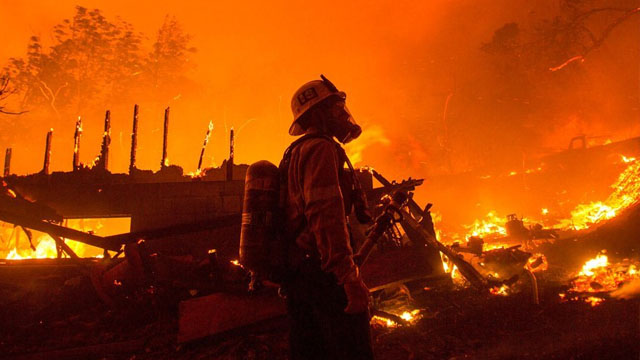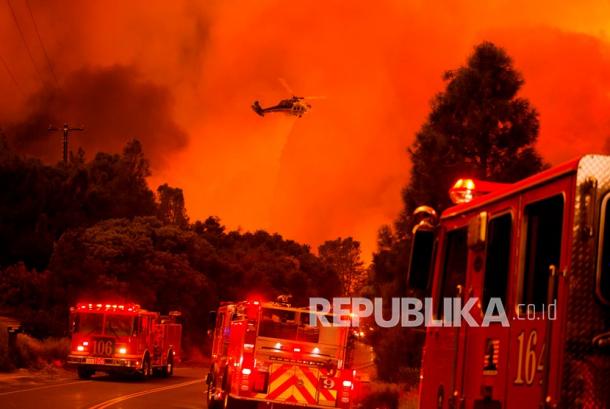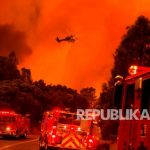Introduction
Wildfires are a natural phenomenon, but their destructive nature can lead to devastating consequences for communities, wildlife, and the environment. One such incident is the Hughes Fire, a catastrophic blaze that left lasting scars on affected regions. This article delves into the causes, impacts, and recovery efforts related to the Hughes Fire, offering a comprehensive understanding of this tragic event.
The Origins of the Hughes Fire

How Did the Hughes Fire Start?
The Hughes Fire was ignited during a particularly dry season, exacerbated by intense heatwaves and gusty winds. Investigations revealed that the blaze might have originated from human activity, including the improper disposal of flammable materials. This points to the critical role individuals play in wildfire prevention.
Environmental Factors Behind the Blaze
Natural elements also played a significant role in fueling the Hughes Fire. Prolonged drought conditions, low humidity, and an abundance of dry vegetation created a perfect storm for the wildfire to spread rapidly across vast areas.
The Immediate Impact of the Hughes Fire
Destruction of Communities and Property
The Hughes Fire destroyed hundreds of homes and businesses, displacing countless families and leaving behind a trail of devastation. Entire neighborhoods were reduced to ashes, forcing residents to rebuild their lives from scratch.
Effects on Wildlife and Ecosystems
Beyond human communities, the Hughes Fire wreaked havoc on local ecosystems. Thousands of acres of forestland were consumed, displacing wildlife and destroying their habitats. Endangered species in the area faced increased threats due to the destruction of critical habitats.
The Human Cost of the Hughes Fire
Loss of Lives
Tragically, the Hughes Fire resulted in the loss of human lives. Firefighters and first responders worked tirelessly to contain the blaze, often risking their own safety. Several individuals lost their lives in the line of duty, while others perished due to the rapid spread of flames.
Psychological Toll on Survivors
For those who survived, the trauma of the Hughes Fire left an indelible mark. Many residents suffered from post-traumatic stress disorder (PTSD) and other mental health challenges as they coped with the loss of loved ones, homes, and livelihoods.
The Response to the Hughes Fire
Emergency Services and Firefighting Efforts
Firefighters from across the region were mobilized to combat the Hughes Fire. Their coordinated efforts, supported by aerial water drops and firebreaks, were instrumental in eventually containing the blaze. However, the scale of the fire underscored the need for enhanced firefighting resources and infrastructure.
Community Support and Aid
Communities came together to support those affected by the Hughes Fire. Nonprofit organizations, government agencies, and volunteers provided food, shelter, and financial assistance to displaced residents. The spirit of solidarity demonstrated the resilience of human connections during times of crisis.
Recovery and Rebuilding After the Hughes Fire
Reforestation and Environmental Restoration
One of the long-term impacts of the Hughes Fire was the destruction of forested areas. Reforestation initiatives were launched to restore these ecosystems, focusing on planting native tree species and creating sustainable land management practices to prevent future fires.
Infrastructure Reconstruction
Rebuilding efforts focused on constructing homes and public facilities using fire-resistant materials and designs. Communities also implemented better land-use planning to minimize the risk of future wildfires.
Lessons Learned from the Hughes Fire
Importance of Wildfire Preparedness
The Hughes Fire highlighted the need for proactive wildfire prevention measures. Public awareness campaigns emphasized fire safety, while local governments introduced stricter regulations on activities that could ignite fires.
Adopting Climate-Resilient Strategies
Climate change plays a significant role in increasing the frequency and intensity of wildfires. The Hughes Fire served as a wake-up call for policymakers to address climate resilience, including reducing carbon emissions and investing in renewable energy sources.
Conclusion
The Hughes Fire was a sobering reminder of the devastating power of wildfires and their far-reaching consequences. While the event brought immense destruction, it also showcased the resilience of communities and the importance of proactive measures to prevent and manage wildfires. As recovery efforts continue, the lessons learned from this tragedy will undoubtedly shape future responses to similar incidents.



































